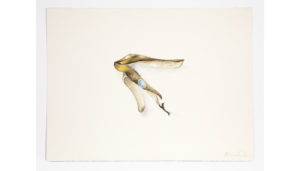
Barkley L. Hendricks, “Them Changes”
Thursday, February 15th until March 24, 2018 at Jack Shainman Gallery, 513 West 20th Street, NYC
About:
Jack Shainman Gallery is pleased to present the first ever exhibition of works on paper, by Barkley L. Hendricks, Them Changes. With these newly discovered bodies of work, the exhibition highlights the fundamental features of Hendricks’s practice with a mode of representation that is so clearly distinct from his best known paintings.
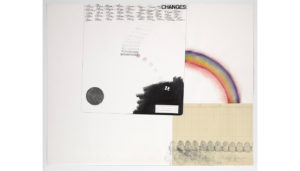
The following is an excerpt from a text written by Laila Pedro on the occasion of this exhibition:
Paintings made by Barkley L. Hendricks are instantly recognizable. His figure’s presence resonates with Hendricks’s own confidence, certainty, and irreverent, abrasive honesty. These aspects come through in the qualities of line and color, and in the focus of intensity – the attentive, nearly scientific, probing way in which Hendricks focused on his subjects. While we associate these characteristics with portraiture because that is what we know of him, in fact, they are more broadly applicable and present in other forms and styles in his work.
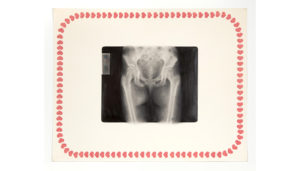
These newly discovered works on paper fall into distinct categories—each of which is cohesive and dynamic enough to stand alone as a body of work and look fresh in a contemporary show today. Some incorporate x-rays, an apt metaphor for what these newly discovered works offer us: a look into the inner mechanics of Hendricks’s mind and process—insight into his tendencies, his unique concerns.
In these works on paper, the objects themselves, their agentic heft of presence, their meticulous, mysterious shadows hold them in the space. It is for this reason that these are more comfortably portraits than still lifes—they are not part of a scene, but are embodied subjects in themselves, holding the space with a presence that, if they are inanimate, conveys a sense of identity nonetheless.
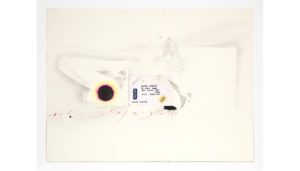
Consider his set of watercolor and graphite banana works from 1979—roughly contemporaneous, that is, with the famous portraits of the Sweet Thang era. Here is the everyday ephemeral Americana of life: the Chiquita banana sticker, instantly recognizable. Here, too, are subjects given the full attention of Hendricks’s gaze; like a sitter returning over several days for a portrait, we see the bananas darken and shrivel from study to study, we see them peeled and unpeeled, singly and in groups. Hendricks spent time with them, looked at them under different light, lavished his focus on them as they evolved and changed. They are anchored in space by his light-touch, ever-precise graphite shadowing. Of course, Hendricks was no dry academic, and the technical and mental focus behind these is leavened by his always titillating wit. The irreverent, irresistible humor of Brilliantly Endowed (Self-Portrait), also from 1979, is impossible to miss in these blackening bananas—now turgid, now limp, now depleted. It’s a visual pun that also reminds us Hendricks never hid his fetishes, nor indulged the slightest bit of shame that sex was at the forefront of his mind.
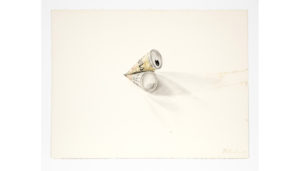
If the connections between the multimedia works on paper and the portraits for which we best recognize Hendricks are not apparently obvious, it is because their similarity lies in character and areas of concern, rather than strictly in aesthetics. The sureness of Hendricks’s line, the specificity of his effort, this minute attention he paid his subjects—human, vegetable, or mineral—these are the defining themes that make his work unmistakable. Trevor Schoonmaker wrote in his essay for The Birth of the Cool, “While best known for his bold life-sized portraits, Hendricks is also an accomplished photographer, landscape painter, watercolorist, draftsman, assemblage artist, carpenter, and jazz musician.” Schoonmaker had identified an essential aspect of Hendricks’s relentlessly questing mind: “a desire to continually learn, experiment, and take risks.” This also “speaks to his faith in artistic integrity, whether or not the art world had been willing to follow along.”
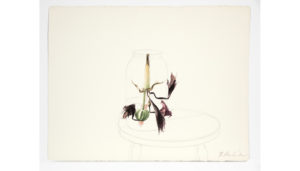
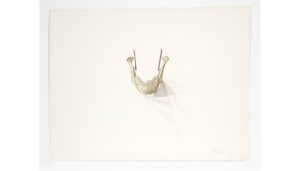
When Hendricks passed away last year, he was enjoying a level of renown that was finally beginning to approximate his influence and vision. He always knew he belonged in the great museums of the world, and now his compositions and endlessly engaging subjects have become deservedly iconic. With these newly revealed works, we get yet another dimension of the portraitist Barkley Hendricks, and of a visual signature we thought we knew.
Hendricks was born in Philadelphia, Pennsylvania and lived and worked in New London, Connecticut up until his death in 2017. He earned both his BFA and MFA from Yale University and was the subject of a large-scale traveling exhibition, Barkley L. Hendricks: Birth of the Cool, organized by Trevor Schoonmaker at the Nasher Museum of Art, Duke University, Durham, North Carolina (2008), which traveled to the Studio Museum in Harlem, New York (2008-2009); Santa Monica Museum of Art, California (2009); Pennsylvania Academy of the Fine Arts, Philadelphia, Pennsylvania (2009-2010); and the Contemporary Arts Museum Houston, Texas (2010). The exhibition catalog has been republished by the Nasher Museum of Art in 2017. Currently, Hendricks’s work is included in Soul of a Nation: Art in the Age of Black Power, exhibited at the Tate Modern July 12 – October 22, 2017; and traveling to the Crystal Bridges Museum of Art, Bentonville, Arkansas, February 3 – April 23, 2018; and the Brooklyn Museum of Art, Brooklyn, New York, September 7 – February 3, 2019.
Hendricks’ work is included in numerous public collections both within the United States and abroad, such as the Whitney Museum of American Art, New York, New York; the Yale University Art Gallery, New Haven, Connecticut.; the National Gallery of Art, Washington, D.C.; the Tate Modern, London; the Studio Museum in Harlem, New York; the Museum of Fine Art Houston, Houston, Texas; the Nasher Museum of Art, Durham, North Carolina; the Columbus Museum of Art, Columbus, Ohio; and the Fogg Art Museum, Harvard University, Cambridge, Massachusetts.
